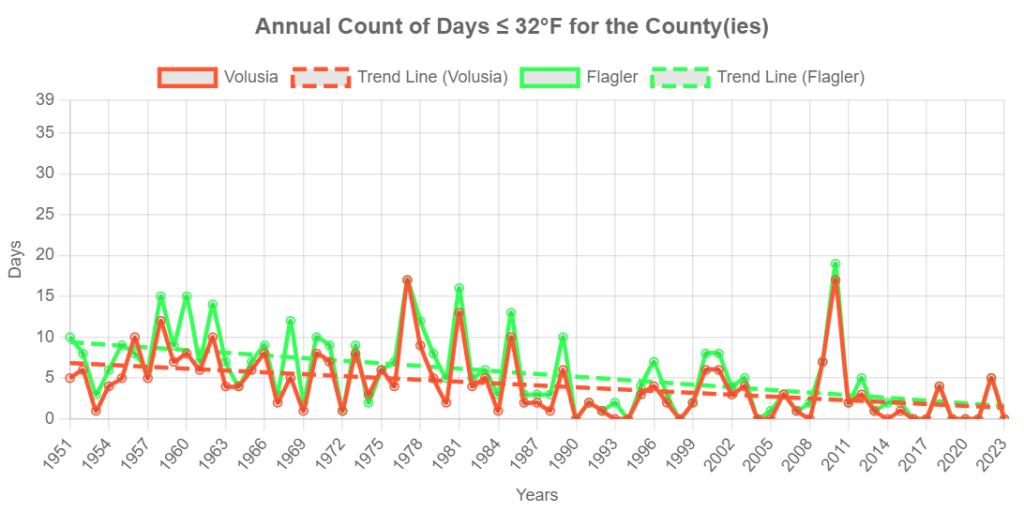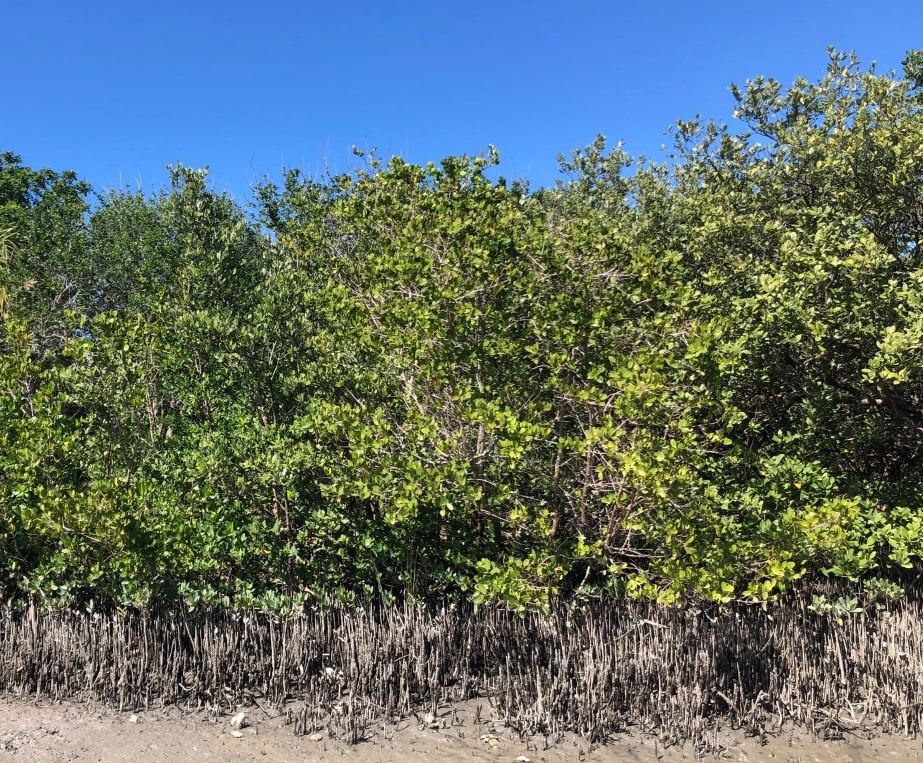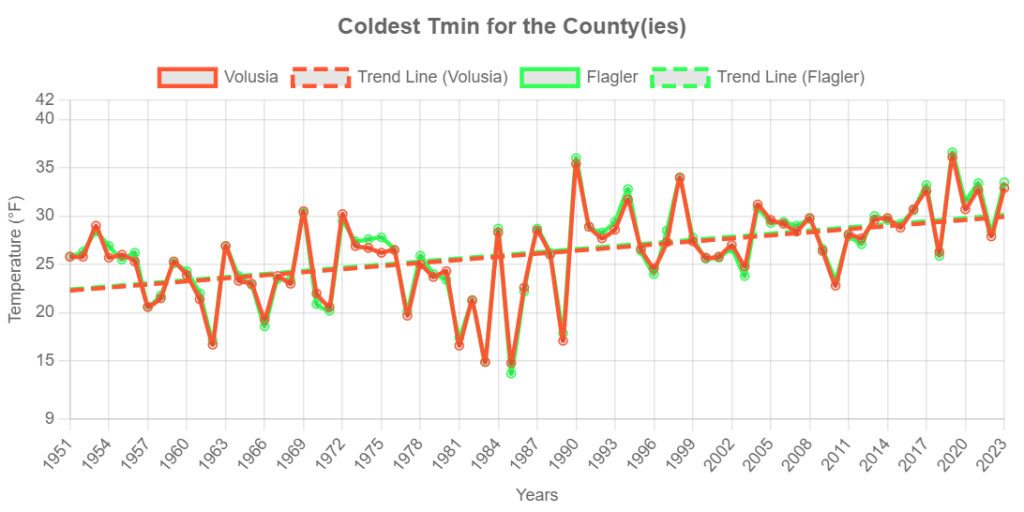Cooler weather in Florida has finally arrived, and although it wasn’t actually freezing outside this morning, it sure feels like it to us Floridians! But wait, will we even see a freeze in coastal central Florida this year?
If you had asked me fifty years ago, I would have said definitely, yes. However, the average minimum temperatures in Volusia and Flagler Counties over the past decade were about 7 degrees warmer than they were fifty years ago. The result? We have only had freeze days in Flagler and Volusia Counties in five of the past ten years.

When we talk about climate change, we often focus on the average or warmest temperatures. However, there has also been an increase in the minimum temperatures we see in Florida, which affects the number of freeze days we have. Here in central-north Florida, we are in an interesting location because we are right along the freeze line, which affects whether many species of plants will survive. As a result, we end up seeing some different species just a bit further to our south versus our north – and some of those southern species may be creeping their way to the north.
One such type of plant is the mangrove. Mangroves are a group of trees that can live in high salinity conditions, which many other species of plants cannot survive. We have three species of mangroves in Florida: red, black, and white (you can learn more about mangroves and how to ID the three species in my previous blog Florida Mangroves). Mangroves live along the edges of our estuaries, providing important habitat and protecting our shorelines from erosion and storms. If you are in southern Florida, you will see mangroves along all the estuarine coasts. However, up along the northern coasts of Florida, you see salt marsh instead of mangroves. This is because mangroves are not tolerant of very cold weather. The most cold-tolerant species, the black mangrove, exhibits leaf loss at 25 degrees Fahrenheit and mortality at 20 degrees Fahrenheit (Osland et al., 2019).

Mangroves have appeared and disappeared in central/northern Florida several times over the past couple of centuries, with each loss associated with an extreme freeze event (Cavanaugh et al. 2019 has a great diagram of the time frame). The last time we had temperatures below 20 degrees Fahrenheit in Volusia and Flagler Counties was in 1989. The 1980s saw several years of extreme freezes (1981, 83, 85, 89) with temperatures below 20 degrees. This affected many plants throughout Florida and had a large negative impact on the state’s citrus industry. It also killed most of the mangroves in our counties. In the time following, those coastal areas grew in with salt marsh grasses. However, we have not had a freeze below 20 degrees since 1989 and over the years mangroves have been reestablishing themselves in our estuaries and moving further north.

What will happen in the future?
It is hard to know the fate of our salt marsh and mangrove habitats because we are right on the edge of their thermal tolerance zone and an extreme freeze event could have a big change in the habitats we currently see. However, with the trend in increasing minimum temperatures that has been observed over the past century, we would expect to continue to see mangroves living in our estuaries and continuing to move further to the north into the marsh habitats of northern Florida and southern Georgia. There are many researchers at universities and National Estuarine Research Reserves studying the growth of mangroves in these areas and the potential impacts on estuarine processes or other species that live in the estuaries. Keep your ears peeled to see what all they discover! In the meantime, we can expect to see fewer freeze days and overall warmer temperatures in the coming years.
Temperature data
The data on minimum temperature and freeze days in Flagler and Volusia counties in this article was obtained through the County-Level Minimum Temperature Explorer, created by a team at LSU. If you live in a different county in Florida (or anywhere in the US!) you can find the minimum temperature and freeze day data in the County-Level Minimum Temperature Explorer tool.
 0
0
